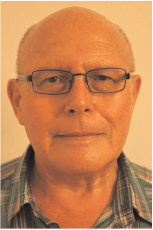Palynostratigraphic and U-Pb CA-IDTIMS isotopic dating of the upper Orallo Formation, northern Surat Basin, Queensland
Jennifer J. Cooling A B and John L. McKellar BA The University of Queensland.
B Geological Survey of Queensland.
The APPEA Journal 56(2) 596-596 https://doi.org/10.1071/AJ15102
Published: 2016
Abstract
The Jurassic–Cretaceous transition in the Surat Basin, Queensland, has not been previously subjected to detailed palynological study and biostratigraphic assessment. The associated lithostratigraphic succession, that is represented by the upper Westbourne Formation, the unconformably overlying Gubberamunda Sandstone, and the succeeding Orallo Formation and Mooga Sandstone, represents the most complete record of deposition for the interval in Queensland. Several important aquifers and aquitards occur in this succession, and a refined palynological biostratigraphy may assist in providing more accurate correlations and improved conceptual models for its deposition and spatial variability.
Preliminary results of the investigation suggest that the existing pan-Australian zonal scheme and the informal alphanumeric scheme widely applied in eastern Australia can be modified to more accurately reflect the stratigraphic distribution of palynomorph species present in, and the overall palynofloral composition of, these uppermost Jurassic–lowermost Cretaceous rocks, not only in the Surat Basin but also, by extrapolation, their equivalents in other eastern Australian basins. This will thus facilitate more accurate intra- and inter-basinal correlations.
In the Orallo Formation material studied to date, zone-index fossils—though present—have proved to be scarce, but this is relative to the extreme richness and the diversity of taxa in the assemblages, the composition of which appears to differ significantly from that described in the literature, and reflects the temperate climate in the environment of deposition. On an introductory basis—as the study is in its early stages—a number of new species have been provisionally identified, and several existing species are seemingly in need of taxonomic emendation.

Jennifer Cooling is a PhD student at the University of Queensland working in association with the Geological Survey of Queensland studying the palynology of the Jurassic—Cretaceous transition in the northern Surat Basin. After a brief but exciting career teaching biology, junior science and maths in Queensland schools, she returned to the University of Queensland to add a Diploma of Science (Earth Sciences) to her existing Bachelors of Science (Hons) and acquire the requisite background knowledge to begin the PhD. |

John L. McKellar is a senior geoscientist in the Petroleum and Gas Geoscience Unit of the Geological Survey of Queensland (Department of Natural Resources and Mines). He began work in the Survey in late 1968, initially in the Palynology Section, working with Noel de Jersey, one of Australia’s foremost pioneering palynologists. After graduating from The University of Queensland in 1971, John worked on the biostratigraphic palynology of Queensland’s late Paleozoic–Mesozoic sedimentary basins. A particular interest in the Jurassic palynofloras of the Surat Basin and their taxonomy and biostratigraphic and paleogeographic significance provided the foundation for his PhD degree, which he completed in 1998 at The University of Queensland, under the supervision of Geoff Playford. Assessing the depositional history of sedimentary basins in Queensland is now John’s main focus. In a 2004 publication, he also broadly outlined the apparent geophysical controls operating on basin development and evolution through the late Paleozoic–early Mesozoic of eastern Australia. This assessment brought together wide-ranging data on the associated floral succession and attendant paleo-climates, as well as on the tectonic and paleomagnetic evolution of the region during this interval of time. |
References
Burger, D., 1973—Spore zonation and sedimentary history of the Neocomian, Great Artesian Basin, Queensland. In Glover, J.E. and Playford, G. (eds.) Geological Society of Australia Special Publication (Mesozoic and Cainozoic Palynology: Essays in Honour of Isabel Cookson), 4, 87–118.Exon, N.F. (1976). Geology of the Surat Basin in Queensland. In Bureau of Mineral Resources, Geology and Geophysics Bulletin 166, 1–160.
Gradstein, F.M., Ogg, J., Schmitz, M., and Ogg, G., 2012—The geologic time scale 2012. Amsterdam; Boston: Elsevier.
Green, P.M., 1997—The Surat and Bowen basins, South-East Queensland. Brisbane: Queensland Department of Mines and Energy.
Helby, R., Morgan, R., and Partridge, A.D. 1987—A palynological zonation of the Australian Mesozoic. In Jell, P.A. (ed.) Memoirs of the Association of Australasian Palaeontologists (Studies in Australian Mesozoic Palynology), 4, 1–94.
Jell, P.A., 2013—Geology of Queensland. Brisbane: Geological Survey of Queensland.
Mckellar, J.L., In Press—Late Early to Late Jurassic palynology, biostratigraphy and palaeogeography of the Roma Shelf area, northwestern Surat Basin, Queensland. In: Laurie, J. (ed.) Memoirs of the Association of Australasian Palaeontologists.
Price, P.L., 1997—Permian to Jurassic palynostratigraphic nomenclature of the Bowen and Surat Basin. In: Green, P.M. (ed.) The Surat and Bowen Basins, South-East Queensland. Brisbane: Queensland Department of Mines and Energy.
Wainman, C.C., Mccabe, P.J., Crowley, J.L., and Nicoll, R. S. Wainman, C.C., Mccabe, P.J., Crowley, J.L., and Nicoll, R. S. (2015). U–Pb zircon age of the Walloon Coal Measures in the Surat Basin, Southeast Queensland: Implications for Paleogeography and Basin Subsidence. Australian Journal of Earth Sciences 62, 807–16.


